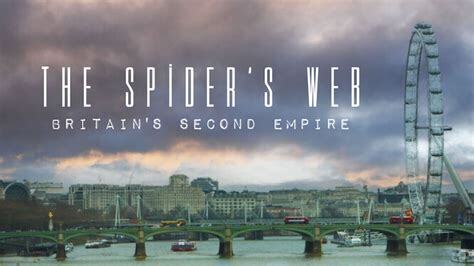The Spider’s Web: Britain’s Second Empire

The Spider’s Web: Britain’s Second Empire
Directed by Michael Oswald (2017)
Film Review
This documentary reveals how after 300 years of global domination, the British empire was replaced by a British financial empire, as many former colonies declared independence in the 1950s and 1960s.
The collapse of Britain’s political empire was accompanied by many threats to its commercial interest across the globe. One of the first was Egypt’s 1956 nationalization of the the Suez Canal, previously controlled by British and French corporate interests. The UK responded by bombing five Egyptian cities, including Cairo. The US reacted by laying a complaint with the UN against the UK, while simultaneously engineering a “run” on the British pound (by encouraging US and other banks to sell their pounds for other currencies).
To ensure this never happened again, the Bank of England created a euro-dollar market, enabling them to hold a large cache of US reserves that couldn’t be regulated by the US government. Most US banks responded by moving their financial operations to the City of London.
The City of London is a private corporation in the center of the British capitol with a private police force and courts and a privately appointed Lord Mayor and governing council. The latter has a permanent unelected seat in the House of Commons. The Bank of England supposedly regulates the city of London, but condones many illegal activities, including money laundering and financing of terrorist activities that would be illegal elsewhere in Britain, UK bankers almost never go to jail.
After creating the euro-dollar market, the City of London’s next move was to set up offshore banking havens in seven British overseas territories, starting with the Cayman Islands in 1969. This enabled Britain to indirectly benefit from a wide range of illegal financial activities, including money laundering, tax evasion and drug, weapons and people smuggling.
In 1980 the seven tax havens had a turnover of $500 billion. By 1988 it was $4.2 trillion. By 1997 nearly 90% of international loans were made through this market. Much of the business that takes place in the City of London is registered in offshore tax havens for secrecy.
The UK is the largest provider of international financial services (40%) in the world, if you include Hong Kong, Singapore and Dubai, which continued to be closely linked to the City of London despite being politically independent of the UK.
When renowned economist Michael Hudson worked at Chase Manhattan during the Vietnam War, the State Department asked him to open some offshore Caribbean banks to help hide the horrendous cost of the war. Typically criminal outflows of money are labeled “errors and emissions” on government balance sheets. He asserts the burgeoning of offshore tax havens enabled the US and UK to keep their economies strong after they exported their manufacturing base to Asia.
The third world loses over $1 trillion a year in capitol flight and tax evasion, a process especially detrimental to Africa’s developing nations. In 2008, the continent of Africa had a $177 billion debt to Western nations, after corrupt sub-Saharan African leaders had moved $944 billion into offshore tax havens.
The Cayman Island is home to 3/4 of the world’s hedge funds and 80,000 registered corporations. There’s a total of $1.9 trillion deposited on an island with a mere 60,000 population.
*William the Conqueror failed to conquer the City of London and allowed it to continue to be self governing. The 1215 Magna Carta confirmed its continuing independence from British rule.
The Most Revolutionary Act
- Stuart Jeanne Bramhall's profile
- 11 followers



